Intermediate Distribution Frames (IDFs): Your Network’s Backbone
Last Updated on March 2, 2024
In the world of complex network infrastructure, organization is key. Imagine the countless wires and cables snaking through a large building, supporting every phone call, internet connection, and data transfer within its walls. That's where Intermediate Distribution Frames (IDFs) come in. They are the unsung network management heroes, ensuring everything stays connected, efficient, and easily manageable. If you're managing a network in a business, school, or any large facility, understanding IDFs is crucial to building a solid foundation for your digital operations.
| Key Takeaway | Why It Matters |
|---|---|
| IDFs are the backbone of structured cabling | They prevent a chaotic tangle of wires, making maintenance and troubleshooting far easier. |
| Strategic IDF placement is crucial. | Consider accessibility for technicians, environmental factors, and proximity to the devices they serve. |
| Plan for growth | Leave space in your IDF design for additional equipment, power outlets, and potential cooling needs. |
| Proper documentation is a lifesaver. | Detailed labeling and diagrams will streamline future network changes and problem resolution. |
| IDFs enhance scalability and flexibility | Easily add new devices or reconfigure your network as your needs evolve. |
Table of Contents
What is an Intermediate Distribution Frame (IDF)?
An Intermediate Distribution Frame, or IDF, is like a smaller version of the Main Distribution Frame (MDF) – the central hub where all your network wiring originates. IDFs serve as secondary distribution points located throughout a building. They help bridge the gap between the MDF and the individual devices (computers, printers, IP phones, cameras, etc.) scattered across different floors or sections.
Typically, you'll find IDFs housed in dedicated telecommunications closets or equipment rooms. Each IDF is connected back to the MDF via backbone cabling. From the IDF, cables fan out to the end-user equipment within its designated area.
Think of it like this: The MDF is your central power station, and IDFs are the power substations that distribute electricity to different neighborhoods within a city.
Key Components of an IDF
While the contents of an IDF might vary based on the size and needs of the network, here are the essential components you'll typically find:
- Rack or Cabinet: This is the physical structure that houses all the components of your IDF. It often utilizes wall-mounted racks or free-standing cabinets to hold standard-sized networking equipment.
- Patch Panels: Patch panels are the heart of the IDF. These modular units have rows of ports where incoming and outgoing cables are terminated. This setup lets you connect and disconnect cables with short patch cords, keeping everything organized.
- Network Switches: Switches are the devices that connect end-user devices to your network. Depending on the size of your network, your IDF might house one or multiple switches.
- Cable Management: Accessories like horizontal and vertical cable managers, rings, and ties ensure that your IDF remains well-organized instead of a tangled mess of wires.
- Labeling: It might seem basic, but clear and detailed labeling on your cables and equipment is a lifesaver regarding troubleshooting and maintenance within your IDF.
Network Equipment Commonly Connected to an IDF
While IDFs themselves primarily serve as organization and distribution points, let's dig a bit deeper into the devices you'll often find connected within them that form the backbone of your network:
- Internet Connection: (WAN) This is your link to the outside world! Your internet connection enters your facility and typically terminates at the MDF. From there, it connects to your main router or firewall.
- Router: Routers are the traffic cops of your network, directing data packets between different networks (like your internal network (LAN) and the internet). Larger networks may have dedicated routers in IDFs to handle traffic within specific zones.
- Network Switches: Switches are crucial for connecting end-user devices like computers, printers, and IP phones within an IDF's service area. They intelligently forward data only to the necessary devices, minimizing network congestion.
- Firewalls: Firewalls act as security guards, protecting your network from unauthorized access and malicious activity. They can be placed at the MDF for centralized protection or within IDFs for more granular security controls in specific segments of your network.
- Other Specialized Equipment: Depending on your network needs, IDFs might also house other equipment such as Power over Ethernet (PoE) switches (ideal for powering IP cameras and phones), wireless access points, servers, or even backup devices.
Recommended Rack Space: When deciding on the physical size of your rack or cabinet, it's useful to have a general guideline based on your network's scale:
| Network Size (End User Devices) | IDF Rack Space (in Rack Units)* | Considerations |
|---|---|---|
| Small (Up to 50 devices) | 12U – 24U | It may be sufficient with a wall-mounted rack |
| Medium (50-200 devices) | 24U – 42U | A full-size rack likely needed |
| Large (200+ devices) | 42U+ | It may require multiple IDFs for effective distribution |
Benefits of IDFs in Network Infrastructure
IDFs might seem like a simple concept, but they offer a multitude of advantages for managing complex network setups:
- Organization: IDFs transform cable chaos into structured wiring. By centralizing cables into designated areas, you avoid the spaghetti-like mess that can make troubleshooting a nightmare.
- Scalability: As your network needs to expand, IDFs simplify adding new equipment or wiring without completely overhauling your infrastructure. This allows you to adapt to growth smoothly.
- Troubleshooting: When network problems arise, having IDFs allows you to isolate issues to specific floors or zones. This makes pinpointing and resolving problems much faster compared to an unorganized network.
- Flexibility: IDFs can accommodate different types of network equipment and cabling. Whether you need to support copper, fiber optics, or a combination of both, IDFs are versatile.
- Security: Many IDFs are lockable cabinets or racks. This added physical security measure helps protect your valuable network equipment from unauthorized access or accidental tampering.

IDF Design and Best Practices
Designing an effective IDF requires careful planning and consideration of several key factors:
Location Considerations:
- Accessibility: Technicians should easily access your IDFs for maintenance and repairs.
- Environmental Factors: Avoid areas prone to extreme temperatures, humidity, or dust, which can damage sensitive network equipment.
- Proximity to End-User Areas: Consider the length of cable runs from the IDF to the devices it will serve. Remember that copper Ethernet cables have distance limitations (typically 100 meters).
- Planning for Growth: Don't just design for your current needs! Leave space in your IDF for future expansion. This means considering additional rack space, power outlets, and potential cooling needs.
Cable Types and Standards:
Choose the right type of network cable (e.g., Cat5e, Cat6, fiber optic) based on your speed and bandwidth requirements. Adhere to industry standards (BICSI) to ensure optimal performance and compatibility.
Documentation:
Having detailed labeling and up-to-date network diagrams is a lifesaver for managing your IT room. It will make future changes, troubleshooting, and even inventory tracking far smoother.
IDF Use Cases
IDFs play a vital role in diverse network environments. Here are some common examples of where IDFs are essential:
- Office Buildings: IDFs distribute network connectivity across different floors and departments in multi-floor offices, keeping everything organized and manageable.
- Data Centers: With massive network connections, data centers (Data Center Knowledge) heavily rely on IDFs to organize and structure their complex web of cables and equipment.
- Schools and Campuses: Educational institutions often have multiple buildings. IDFs enable network access across different locations, supporting classrooms, administrative offices, and other facilities.
- Other Large Facilities: Hospitals (HealthTech Magazine), warehouses, manufacturing plants, and various other large-scale operations benefit from the structured cabling and organizational advantages that IDFs provide.
Expert Insight
As network engineers at iFeeltech IT Services, we spend quite a lot of time in IDF rooms. I can tell you that outdated, unorganized IDFs can hinder network setup and operations. Even though sometimes it seems impossible to clean up the mess of unorganized cables, removing old cabling, running fresh Ethernet cables, and organizing the IDF room can make a difference, as the IDF is the heart of your network operation.
Conclusion
Intermediate Distribution Frames, though often overlooked, are the backbone of well-organized and efficient network infrastructures. Whether you're managing a small office or a massive enterprise network, investing in proper IDF design and implementation pays dividends in the long run. By ensuring your IDFs are strategically placed, well-equipped, and adhere to best practices, you create a scalable, maintainable network, and prepared to support the ever-growing demands of digital communications.
What is the difference between an MDF and an IDF?
Think of the MDF as the grand central station of your network. It's where all external lines enter the building and connect to your internal network. IDFs are like smaller stations throughout the building, distributing connectivity to specific floors or zones.
Why are IDFs important in large buildings or campuses?
IDFs keep your cabling organized and manageable. Without them, you'd have a massive tangle of wires running directly from the MDF to every device, making troubleshooting and maintenance a nightmare. They also enable easier expansion as your network grows.
Besides network switches, what other equipment might I find in an IDF?
Depending on your network needs, IDFs could also house:
– Routers: To direct traffic between your internal network and the internet.
– Firewalls: For network security.
– PoE Switches: To power IP phones or cameras.
– Wireless Access Points: To provide Wi-Fi coverage.
– Servers or backup devices.
Do I need multiple IDFs?
For smaller buildings, a single IDF might be sufficient. However, in larger buildings with multiple floors or a vast area, multiple IDFs are often necessary to ensure efficient network distribution and reduce cable run lengths.
Are there specific temperature or humidity requirements for IDFs?
Yes! Network equipment is sensitive to heat and moisture. Ideally, your IDF should be in a climate-controlled room with temperatures below 85 degrees Fahrenheit (29 degrees Celsius) and humidity levels between 40-55% to prevent equipment from overheating.
Can I install an IDF myself, or do I need a professional?
While some basic IDF setups might be manageable with DIY experience, it's strongly recommended to consult a network technician or an electrician for larger or more complex network setups. They can ensure proper cabling, equipment installation, and adherence to safety standards.
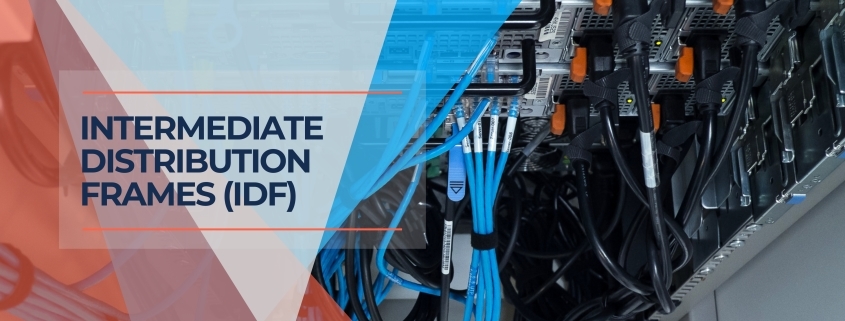

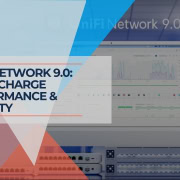
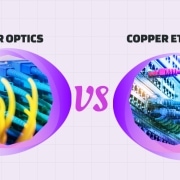


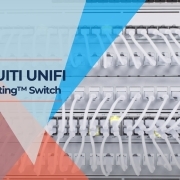

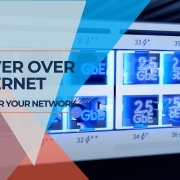


Leave a Reply
Want to join the discussion?Feel free to contribute!